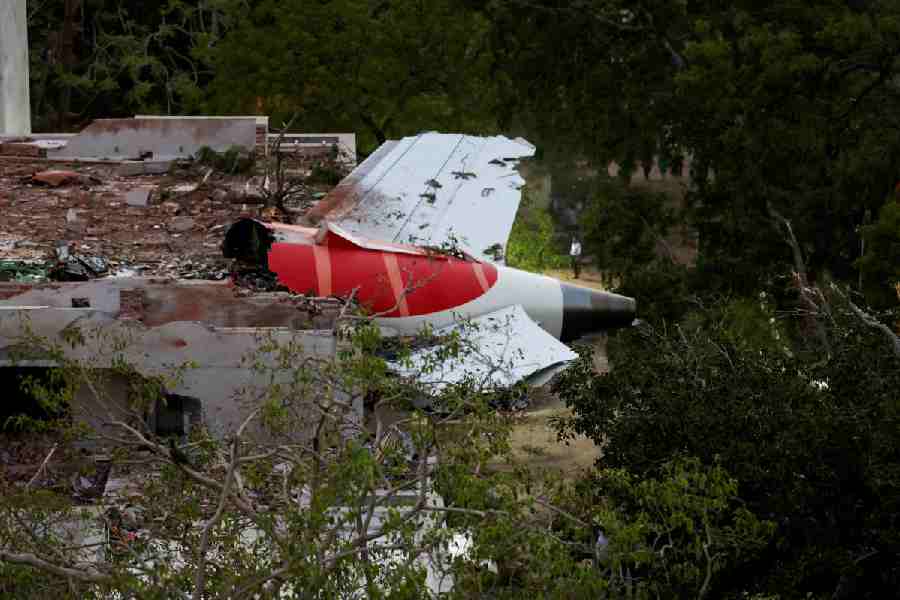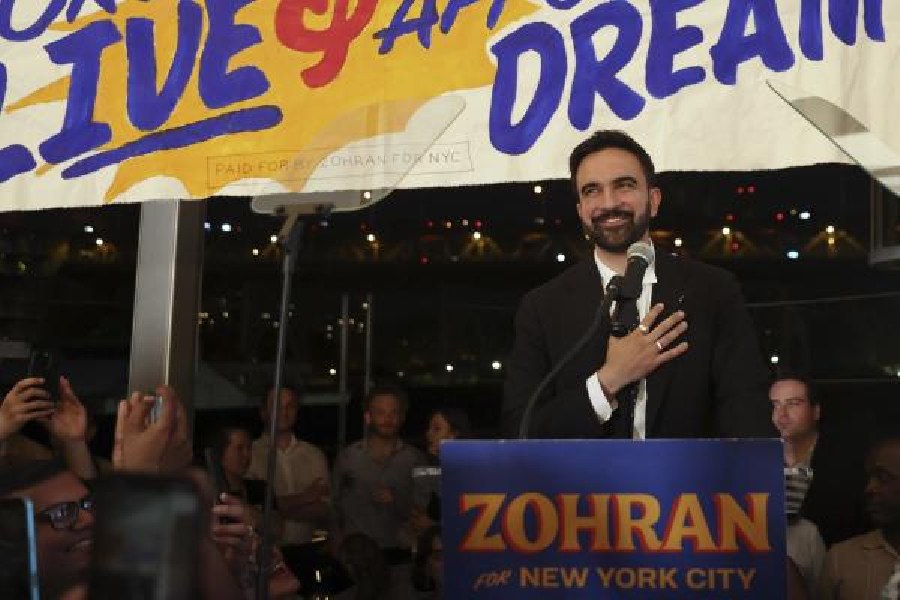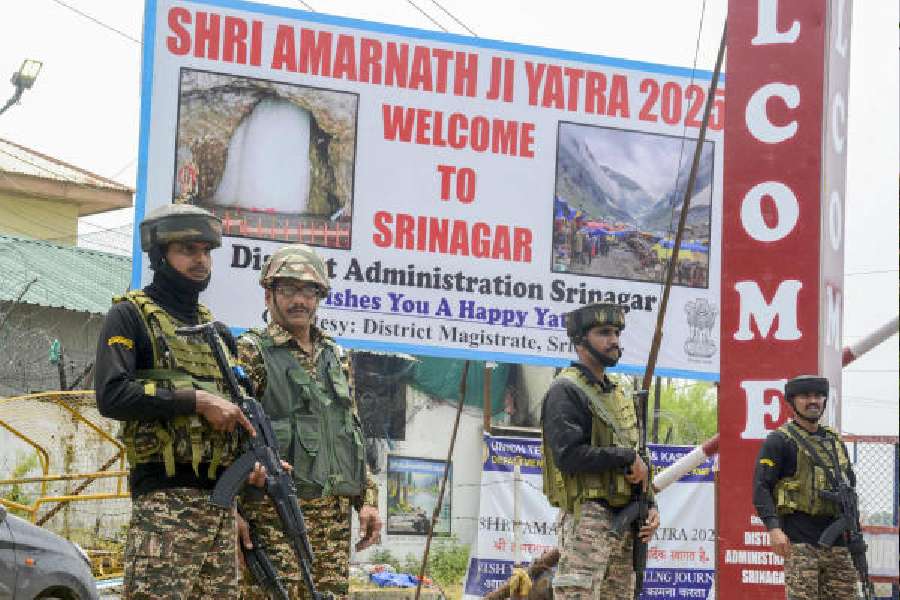 |
Washington, Feb. 6: When Manmohan Singh told George W. Bush “the people of India deeply love you”, it was ridiculed as an emotional overreach by the Prime Minister in a moment of weakness. Today, four-and-a-half years later, Americans are basking in the brand of love from Indians that they truly understand.
In at least five Indian cities, fans of American football were up in the wee hours of Monday morning, organised for the first time in numbers to watch “Super Bowl”, the biggest annual sporting event in the US.
Super Bowl is huge across America, where the Indian American community was drawn to its party value several decades ago. Traffic virtually disappears from US streets during the evening of the game and more food is consumed in front of TV sets on Super Bowl Sunday than on any other day in the calendar.
But this was the first time that Super Bowl was formally promoted in the subcontinent, Evan Rosenfeld, who is directing a documentary on the birth pangs of American football in five Indian cities, told a blog radio conversation organised by the South Asian Journalists Association here yesterday.
Rosenfeld’s documentary, Birth of a Sport, which he expects to release by September, was triggered by an obscure news report he came across sometime ago about a football league in India. He nearly discarded the clip assuming it was soccer, as traditional football is called here.
But the words “American football” caught his attention and Rosenfeld realised that this was a novel, potentially exciting enterprise being launched in India, copying American culture in yet another sphere of life.
Makers of the documentary have been back and forth from India several times in the last six months and are even identifying future stars of the game in the country, although they concede that it will be at least a decade before American football catches mass imagination, if at all.
At the centre of efforts to import American football into India is the Elite Football League of India (EFLI), which was set up on August 5, 2011, and the first regular season games in South Asia, with newly formed teams from Sri Lanka and Pakistan as well, opened in late last year.
Rosenfeld, who filmed the games for his documentary, conceded that attendance was thin for the nascent sport unfamiliar to most Indians, and even on TV entire games were not shown because American football takes so long and can be boring to viewers who are not addicts of the game. Critics have described American football, perhaps unfairly, as a series of conferences among players interrupted by bouts of violence.
Last year, Richard Whelan, CEO of EFLI, had predicted in an exchange with The Telegraph that American football players had the potential to “become amongst the highest paid professionals” in Indian sport. “In India, just like in America, these athletes will surpass Bollywood actors in both ‘star status’ and earning and endorsement power.”
Although Americans have no qualms about claiming that their version of football played with an oval ball on a rectangular field is a global sport, efforts to export the game in any significant way across the Atlantic or the Pacific have so far failed.
A National Football League (NFL) for Europe to promote the sport was established in 1991 with great fanfare but it eventually folded. Small American football leagues exist in South Korea, Japan and Israel among their large expatriate populations from North America, supported by local people who have embraced aspects of the American way of life.
Mention of American football may bring forth looks of incomprehension among most Indians, but the EFLI’s efforts are attracting considerable attention in North America. Vijay Setlur, a sport marketing lecturer at the Schulich School of Business in Toronto, one of the hosts at yesterday’s radio conversation, said India’s foray into American football has been a “popular discussion in my class” since the EFLI was launched.
Setlur wondered if the EFLI’s ambitious plans to support 52 American football teams in cities in the region with a population of more than one million by 2022 were feasible. Rosenfeld said promoters of the game in the subcontinent have “huge dreams”, adding that the first season in late 2012 was “proving that it could be done”.
Setlur said he had watched clips of the game in South Asia and was unsure “whether to cringe or be in awe”. But he conceded it was “definitely strange” to see American football being played in an Indian setting.
Be that as it may, it has not prevented the EFLI from making big plans. One Indian player who has been identified with future potential, Roshan Lobo, a star running back for the Bangalore Warhawks, will soon arrive in Alabama to train with American players.
The promoters of the sport appear to have set their sights on money from television viewership in India. It is a gamble whose results may take time to prove.
Among the American football teams that have sprung up is one in Calcutta: Kolkata Vipers. The team has already played in the first season, but there are no plans yet to have a game in Calcutta and no effort so far to identify any venues in the city. The other teams in Indian cities are: the Delhi Defenders, the Mumbai Gladiators and the Pune Marathas, in addition to the ones in Calcutta and Bangalore.










